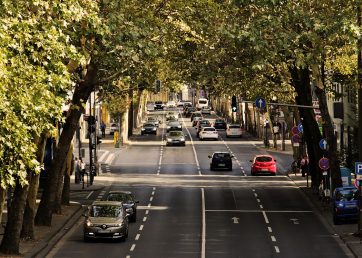New data show impact of COVID-19 on transportation
By David Staudacher
The world was thrown into upheaval as COVID-19 wreaked havoc on lives and daily routines. As governments issued stay-at-home orders, people changed their day-to-day habits in an instant. Working from home, postponing travel, having groceries delivered to front doors, and ordering “to go” at restaurants are just a few ways in which many patterns have changed.
As vaccines roll out to more people and the light at the end of the pandemic tunnel grows brighter, researchers are asking, “Which of these changes are likely to be maintained in a post-COVID-19 world?”
Researchers from the University of Illinois Chicago and Arizona State University have conducted a nationwide survey that covers a wide range of topics including commuting, daily travel, air travel, working from home, online learning, shopping and risk perception, along with information about attitudes, socioeconomic status and demographics to measure the potential for long-lasting changes and what it could mean for our cities.
“While we do not observe any radical shift in how people expect to live after the pandemic, some small shifts are expected to have a large impact,” said Sybil Derrible, co-principal investigator and UIC associate professor of civil, materials and environmental engineering (CME). “In particular, many respondents expect to continue working from home a few days a week once COVID-19 is no longer a threat, which could have a large impact on traffic congestion and transit ridership.”
The COVIDFuture research team — which includes Kouros Mohammadian, co-principal investigator and CME department head at UIC; Deborah Salon, co-principal investigator and associate professor from ASU’s School of Geographical Sciences and Urban Planning; and Ram Pendyala, professor with ASU’s School of Sustainable Engineering and the Built Environment — collected online survey responses from more than 8,700 adults across the United States and weighted the dataset to be representative of the U.S. adult population.
The group is releasing all of its first-wave data to city planners, businesses, researchers and others who are interested in understanding how U.S. residents’ choices have evolved during the pandemic and their expectations for the future. The data include information about travel-related behaviors and attitudes but do not include personal identifying information about participants.
“The unique dataset not only examines changes in respondents’ behavior over time and across the U.S. as a result of the COVID pandemic, it also captures the dynamics of their attitudes and perceptions throughout the pandemic at different recovery stages,” Mohammadian said.
“The data is incredible and can be used to measure many things,” Derrible said. “We can measure who has suffered most during the pandemic since we have collected data from all over the United States and carefully targeted all major socio-demographic groups. Moreover, we can start thinking about how the post-pandemic world will look like. Furthermore, since the project also involves a wave two and three, we will also see whether people end up behaving as they expected initially.
“Everyone in the world can access the data for free, including all local, state, and federal authorities. We stand by to work with them to help a stronger recovery.”
For more information on the survey, visit covidfuture.org or download the data at covidfuture.org/data.
Waves two and three ask similar questions on the same survey participants and track how things evolve. The second wave is completed and scheduled to be available in early summer, and the third wave starts in May and will be available in late summer.
The COVIDFuture Survey is funded by the National Science Foundation, the Center for Teaching Old Models New Tricks at Arizona State University, the Knowledge Exchange for Resilience at Arizona State University and CONVERGE at the University of Colorado Boulder.
Categories

